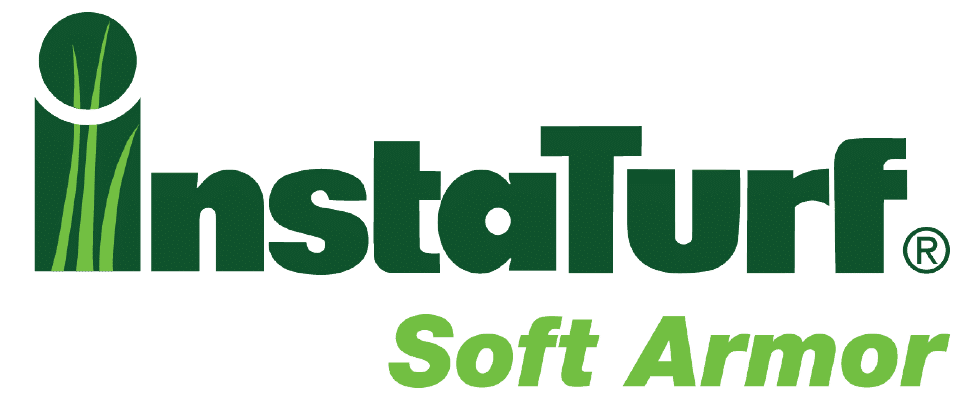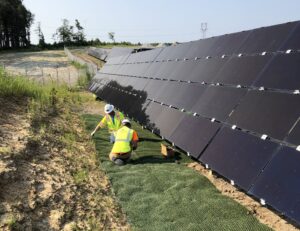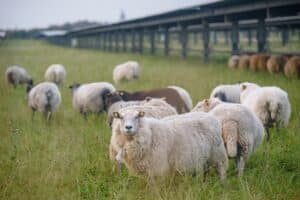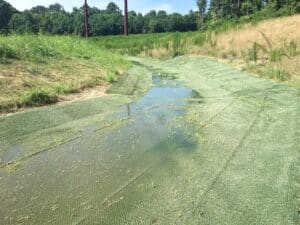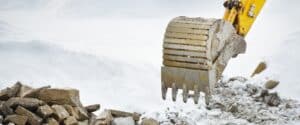Soil erosion can pose significant challenges in numerous situations and can have a negative environmental impact if left unchecked. Civil engineers and contractors that often deal with soil erosion control are the ones in a position to do the most to prevent this phenomenon from happening in the first place.
Effective erosion control practices and materials handle different types of surface runoff, which is important in preventing soil loss, water pollution, wildlife habitat loss, and human property degradation. Steep slopes, high water flows, and unstable soils can be considered among the main culprits that lead to soil erosion. According to a study by Cornell University, soil is being washed away 10 to 40 times faster than it’s replenished on a global level. As a consequence, this leads to severely degraded land every year, roughly covering the size of the entire state of Indiana. In the United States, the annual damage as a direct result of soil erosion is estimated at around $37.6 billion. Worldwide, that cost is a whopping $400 billion per year.
To make matters worse, around 60% of all the soil that is washed away ends up as sediment in our rivers, streams, and lakes. This directly impacts aquatic wildlife habitat, promotes excess algae growth, and makes all of these bodies of water more prone to flooding, particularly during today’s high-intensity storm events. Therefore, sediment is recognized by the U.S. E.P.A. (Environmental Protection Agency) as the number one water pollutant in the country. But, soil sediment isn’t the only concern, eroded soil often carries excess fertilizers, herbicides, pesticides and other toxic chemicals into our surface waters.
In addition, soil erosion also disturbs the soil’s natural structure and its ability to store water and support vegetation growth. As such, this can lead to a reduction in biodiversity, groundwater recharge, essential nutrients, and soil biota. In turn, this harms rangeland, forests, and other natural ecosystems. Therefore, soil stabilization plays a crucial role in preventing erosion, re-establishing vegetation, and curbing all the negative effects associated with soil degradation. Choosing and properly using the proper erosion control products help mitigate these effects while keeping project costs to a minimum. In this guide, we look at the differences between rock riprap and turf reinforcement mats (TRMs) as a means of soil erosion control.
Rock Riprap vs. RECPs
Traditionally, rock riprap and other hard armor solutions such as concrete have been used to protect riverbanks, slopes, channels, shorelines, and other areas exposed to substantial erosive forces of flowing water and/or wave action. Simply put, rock riprap represents a permanent ground cover that consists of large, loose, and angular stones of different sizes. It is used to protect soil from erosion as a direct result of concentrated runoff as well as stabilize slopes that are prone to seepage.
Rock riprap is often considered a “quick-fix” for stabilizing areas subject to high water flows as it is immediately effective upon installation. It can also provide some minor water quality benefits by increasing roughness and facilitating some degree of sediment deposition. However, when compared to vegetative, “soft armor” solutions, rock riprap is usually more expensive to install and maintain, does not provide the same ecological and environmental benefits, and can even be a safety hazard to pedestrian and vehicular traffic.
Rolled erosion control products (RECPs), in more basic forms, have been used for temporary protection and vegetation establishment in the soil erosion industry since the early 1950s. Over the years, this technology has evolved to include both temporary and permanent solutions for soil stabilization and erosion control. These products also help retain soil moisture, promote seed germination, and enable better vegetation establishment. Furthermore, RECPs are more aesthetically pleasing than hard armor materials. They also cost less, require less maintenance, and provide better environmental/ecological benefits.
Hydraulic data also indicates that some RECPs can meet and, under certain circumstances, even exceed the flow-induced shear stress and maximum velocity ratings of large rock riprap. Based on past projects, vegetated “soft armor” systems have also decreased the cost of projects by over 60%. For instance, in 2012, the Illinois Department of Transportation commissioned a project to stabilize a channel used to handle stormwater runoff from two large adjacent roadways. The initial plans called for rock riprap at a total cost of around $1 million. They, however, chose permanent RECPs, also known as Turf Reinforcement Mats (TRMs) as an alternative, at only about one third the price of the rock. TRMs were approved as an alternate to riprap on this project based on hydraulic data from standardized testing proving that once fully vegetated, the TRMs would be able to handle the 20 ft/s flow velocities ande 13 lbs/sf shear forces generated in the channel during the design storm event. What’s more, the “greener”, more natural setting instilled by the TRM and vegetation was a welcomed benefit.
Different Types of Rolled Erosion Control Materials
Rolled erosion control products (RECPs) is an umbrella term that incorporates several types of erosion control technologies. RECPs consist of either organic and/or synthetic materials manufactured into a blanket or mat that’s supplied in roll form. One of their main functions is to hold the soil and seed in place while vegetation establishment takes place. As mentioned, there are several types of RECPs, some of which are temporary while others are permanent. The four basic types of rolled erosion control products include the following:
- Erosion-Control Nettings (ECNs) – These can be either an extruded geosynthetic mesh or a planar woven natural fiber netting that’s used separately as a temporary RECP or as a component on the manufacture of other RECPs.
- Open-Weave Textiles (OWTs) – As a temporary product, OWTs are degradable RECPs composed of either natural or polymer fibers, which are woven into a matrix to provide erosion control and facilitate vegetation growth.
- Erosion-Control Blankets (ECBs) – Similar to OWTs, ECBs are also temporary products that are chemically, structurally, or mechanically bound together to form a three-dimensional matrix. The netting type of these products can also be matched to the site requirements at hand.
- Turf Reinforcement Mats (TRMs) – Unlike the other three examples above, TRMs are permanent RECPs composed primarily of non-degradable synthetic fibers, nets, mesh, filaments, or other such elements. TRMs are used to provide immediate erosion protection, establish vegetation growth, and permanently reinforce the vegetation once established.TRMs are used in areas where the expected hydraulic forces from concentrated flows or wave action will exceed the limits of natural, unreinforced vegetation. They structurally support the vegetation and help prevent the soil bed in which the vegetation is rooted from being washed out, thereby increasing the vegetation’s erosion resistance.
TRMs have proven to more than double the erosion resistance of vegetation, enabling its use in high flow areas once reserved for rock riprap and other hard armor materials. TRMs are also sometimes used in areas needing extended erosion protection due to slow vegetation establishment. However, it’s important to note that as the name implies, in order for a turf reinforcement mat to effectively control erosion long-term, it must eventually work in conjunction with vegetation. Without vegetation roots to consolidate the soil and leaves to provide shade, TRMs will eventually fail due to incremental soil loss from under the mat, and/or degradation of the synthetic components from extended exposure to sunlight.
TRMs vs. Rock Riprap For Soil Erosion Control
As mentioned, hard armor materials such as rock riprap are used to prevent soil erosion in areas that expect to see high velocities and considerable shear stresses. Given rock riprap’s immediately effective armoring capabilities, it’s easy to understand its widespread use. However, soft armor vegetative solutions, such as TRMs, tend to offer more benefits than what can be expected from rock riprap and other types of hard armor. This includes their cost-efficiencies, as well as their aesthetic, safety, ecological, and environmental benefits. As long as the area to be protected can sustain long-term vegetation growth, TRMs can likely provide a more desirable long-term solution.
Nevertheless, rock riprap does hold one major advantage over most “conventional” TRMs, so many engineers and contractors still decide to use it in favor of vegetative solutions. You see, most conventional TRMs do not provide a high level of erosion protection until they become fully established with mature vegetation. This process can often take from 6 to 12 months, and sometimes longer, depending on the type of vegetation, time of installation, soil fertility, site location and other factors affecting vegetation growth. During this time, the unvegetated or partially vegetated conventional TRMs offer only limited erosion resistance and are more vulnerable to erosion damage than rock riprap. As such, rock riprap has remained the preferred high flow armoring solution for many engineers and contractors.
That said, there are some new permanent erosion control/turf reinforcement mats that have recently been introduced to the market which circumvent this problem. The InstaTurf ShearForce10 and ShearForce12 high flow erosion control products utilize a unique simulated turf structure that substantially improves the immediate armoring capabilities of these products before and during vegetation establishment. These state-of-the-art, revolutionary systems provide erosion protection exceeding that of 24 – 30-inch rock immediately after installation and before vegetation establishment. Once the vegetation has established through these products, the erosion resistance of the hybrid simulated turf/natural vegetative system will surpass that of 36-inch rock riprap.
Design Considerations of TRMs vs. Rock Riprap
Both turf reinforcement mats and rock riprap have their own design considerations that need to be taken into account before a project is put into practice.
Rock Riprap Design Considerations
Riprap is typically classified as either graded or uniform. Uniform riprap consists predominantly of similar-sized stones, whereas graded riprap has a mixture of stones of different sizes. In most cases, graded riprap is preferred as it forms a more flexible cover with fewer voids, adapting better to uneven surfaces. Typical rock sizes range from 3 inches to 36 inches in diameter, with larger rock having greater resistance to movement in water flow and thus higher permissible shear stress. According to the Federal Highway Administration’s Hydraulic Engineering Circular #15,(HEC #15 2005), a rule-of-thumb calculation for determining the permissible shear stress (pounds/square foot) of rock riprap for channel lining applications is 4.8 times the median diameter (D50) of the rocks (in feet). (see Table 1. below for permissible shear stress ratings of common rock sizes vs natural vegetation and TRM-reinforced vegetation). No matter the size, riprap needs to be placed on a proper filter material of gravel or heavy-duty filter fabric to prevent erosion of the underlying soil and settling of the rock bed.
Mechanical “dumping” with heavy equipment or hand placement of individual stones may be required, depending on the rock size, site access and other factors limiting equipment usage. Thickness of the riprap layer is typically at least twice that of the rock’s median size (D50). For example, rock with a D50 of 12 inches would require an in-place layer with a minimum thickness of 24 inches. However, keep in mind that thickness requirements may vary with type of application and applicable state/local specifications. The excavated bed needs to be deep enough to include both the filter material and required thickness of the riprap layer. Large voids in the rock riprap layer should also be filled with spalls and other smaller rocks.
TRM Design Considerations
By comparison to rock riprap, TRMs don’t require the same level of site preparedness. TRM installations typically involve simply preparing the soil surface into a relatively smooth seedbed by tilling or raking the top 1 – 2 inches and removing any large dirt clods, rocks or sticks. However, since conventional TRMs, unlike rock, have substantially lower permissible shear stress ratings before vegetation establishment, further design considerations are called for.
According to ASTM D6460 large-scale channel liner testing on TRMs conducted by AASHTO’s National Transportation Product Evaluation Program (NTPEP), conventional TRMs typically have unvegetated permissible shear stress ratings of around 3 lbs/sf. Meaning, concentrated water flows generating shear stresses of 3 pounds per square foot or more will cause significant erosion of the underlying soil, seed loss and subsequent failure of the TRM to develop future vegetation. On the other hand, as tested with 12 months of vegetation growth, the permissible shear stress ratings of these products increase up to and beyond 12 lbs/sf once fully vegetated, which falls in line with the FHWA’s permissible shear stress ratings of 30 inch and greater diameter rock riprap.
This vast discrepancy between the unvegetated and fully vegetated performance ratings of conventional TRMs must be considered during the design process. Historically, channel lining design guidance provided by the FHWA for TRMs suggested using the projected flow discharge from a 2-year storm event to calculate shear stress for comparison to the TRM’s unvegetated permissible shear stress rating and determination of its short-term effectiveness. To determine the TRM’s suitability for long-term channel protection, the flow discharge from a 10-year (or greater) design storm event should then be used to calculate expected shear stress for comparison to the TRM’s fully vegetated permissible shear stress rating. While this “two phase” channel liner design approach may have been sufficiently conservative in the less severe climatic conditions of the late 1900’s and early 2000’s, one may argue that the more frequent, higher intensity storm events we face today warrant a more conservative approach, particularly in avoiding failures of TRMs before vegetation establishment. One such approach would be to simply use the flow discharge from the project’s design storm event (commonly 10, 25, 50 or 100-year) to calculate expected shear stress on the TRM without any vegetation. This “worst-case” analysis would generate the most conservative results with lowest level of risk for the designer. Good news is, the new InstaTurf ShearForce high flow erosion control products, with unvegetated permissible shear stress ratings exceeding those of 24 inch rock riprap, allow engineers to confidently utilize more vegetation in their designs, even when using the most conservative design approach.
Table 1.Permissible Shear Stress Ratings for Vegetative Channel Lining Materials vs Rock
- Natural (Unreinforced) Vegetation – 2 lbs/sf – 7.5 lbs/sf
- Conventional TRMs, Unvegetated – 2.5 lbs/sf – 3.2 lbs/sf
- Simulated Turf High Flow Erosion Control Mat, Unvegetated – 10 lbs/sf – 12 lbs/sf
- Conventional TRM-Reinforced Vegetation – 12 lbs/sf – 16 lbs/sf
- Simulated Turf High Flow Erosion Control Mat, Vegetated – 14 lbs/sf – 16 lbs/sf
- 24-inch Rock Riprap – 9.6 lbs/sf
- 30-inch Rock Riprap – 12 lbs/sf
- 36-inch Rock Riprap – 14.4 lbs/sf
The Benefits of TRM-Reinforced Vegetation over Rock Riprap
Since both rock riprap and TRMs are used predominantly for similar applications, it’s important for engineers and contractors to understand the benefits that TRMs have over their hard armor alternatives – in this case, rock riprap.
The first thing that needs to be addressed here is cost-effectiveness. In general, the average cost of riprap can be anywhere from $30 to $65 per square yard, installed, and sometimes much more, depending on rock size, transportation costs from the stone quarry, and other project specifics. By comparison, TRMs typically cost anywhere from $6 – $22 installed, depending on the type of TRM used and installation details. One of the main reasons for the significant cost difference between rock and TRMs is all the site preparation that goes into a riprap project. Heavy machinery is needed for excavation and stone placement, alongside large dump trucks for transportation. By comparison, a typical TRM installation is done, in large part manually, requiring no heavy equipment, other than soil preparation and seeding equipment, if so used.
As for long-term cost benefits, it’s important to keep in mind that rock riprap, though considered a “non-vegetative” solution, will eventually vegetate, often with weeds and other undesirable plants growing up through voids in the rock bed. This can become a real maintenance issue, especially on well-manicured residential and commercial development sites. Since rock can’t be safely mowed over, the unwanted vegetation must be controlled manually, either by spraying, weed-eating or pulling. Furthermore, rock riprap is often used adjacent to lawn areas, necessitating extra caution when mowing along the rock beds. These edges are also often managed “manually” to keep mowers a safe distance from the rock.
On the other hand, properly installed and vegetated TRMs, with no loose edges protruding from the vegetation can readily be mowed over with standard equipment. That said, if a stitched and netted TRM is used, it’s important to make sure none of the threads become loose and exposed as they can be caught in mower blades. This is not an issue for monolithic-structured TRMs, such as the InstaTurf ShearForce10, which have no threads to potentially unravel.
Another reason to choose turf reinforcement mats over rock riprap has to do with safety, particularly when used in urban and suburban areas. Rock riprap, when placed along roadways, pathways or in areas where people walk, can pose an accident risk for vehicles and pedestrians alike. Vegetation is not only a safer alternative but a more aesthetically pleasing one as well. Finally, there are environmental considerations that need to be taken into account. According to the United States Environmental Protection Agency (U.S. EPA), “a conservative estimate would say that a properly designed vegetated swale may achieve a 25 to 50 percent reduction in particulate pollutants, including sediment and sediment-attached phosphorus, metals, and bacteria.” In other words, TRM-reinforced vegetation can greatly reduce water pollution levels, especially when compared to hard armor materials. Also, TRM-reinforced vegetation does not act as a heat sink like hard armor materials do when exposed to sunlight, which can subsequently elevate water temperatures and negatively impact aquatic life.
Then, there’s the issue of CO2 emissions, which TRM-reinforced vegetation can lower by a significant margin. In fact, it was revealed that the use of TRMs instead of the carbon-heavy rock riprap and concrete, can lower the overall production of CO2 by a whopping 95%. This figure doesn’t even consider the levels of CO2 sequestration provided by the vegetation in an area that would, otherwise, be covered by concrete or rock.
So, when it comes to choosing the best type of erosion armoring for high flow areas on your projects, highly effective TRMs, such as the InstaTurf ShearForce10, win against rock riprap and other hard armor materials nine times out of ten. By offering more cost-effective, more environmentally friendly, safer, and better-looking erosion protection, these soft armor materials can deliver a much better permanent solution. And together with InstaTurf, you can make it happen! Contact us today for more information!
